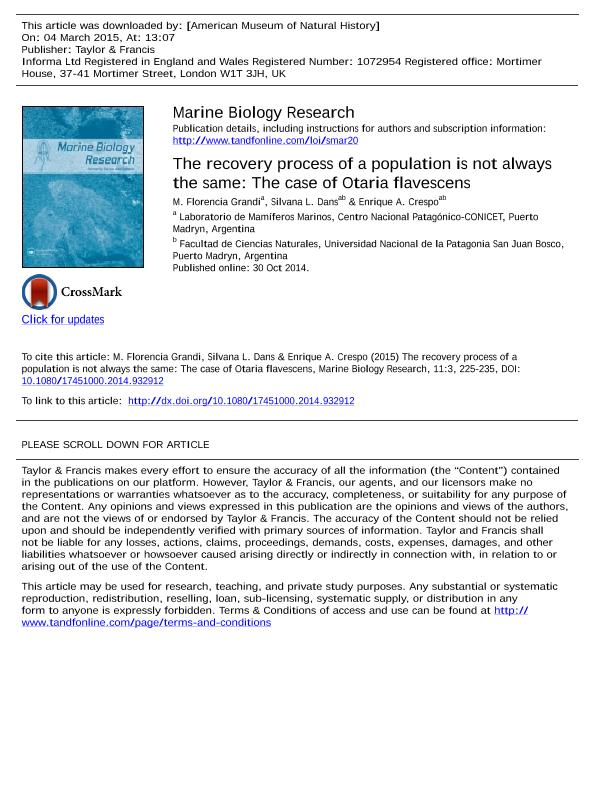Artículo
The recovery process of a population is not always the same: the case of Otaria flavescens
Fecha de publicación:
03/2015
Editorial:
Taylor & Francis As
Revista:
Marine Biology Research
ISSN:
1745-1000
e-ISSN:
1745-1019
Idioma:
Inglés
Tipo de recurso:
Artículo publicado
Clasificación temática:
Resumen
Populations of the South American sea lion (Otaria flavescens) were decimated throughout its range along the Atlantic coast. Responses to this decline have been different in different parts of the species´ distribution range. Some stocks are still decreasing, some remain stable, and some are recovering slowly. In the Southwestern Atlantic, sea lion populations are now increasing. However, 50 years after the cessation of hunting these populations have not recovered to the levels they had before exploitation, with the recovery process occurring at the same time as increasing development of human coastal activities. The aims of this study were to present recent information on abundance and trends in the southern Patagonian population of sea lions and to test the hypothesis of population expansion with a particular recolonization process. Results showed that there was an increase in the number of sea lions in all colonies and a change in the social composition of nine colonies, but no new breeding colonies were found. The population trajectory of O. flavescens from southern Patagonia was similar to that observed in the rest of the South Atlantic populations, but the recovery and recolonization processes are still in progress. Here we discuss possible explanations of which factors could have delayed the recovery within the Southwestern Atlantic stocks.
Archivos asociados
Licencia
Identificadores
Colecciones
Articulos(CCT-CENPAT)
Articulos de CTRO.CIENTIFICO TECNOL.CONICET - CENPAT
Articulos de CTRO.CIENTIFICO TECNOL.CONICET - CENPAT
Citación
Grandi, Maria Florencia; Dans, Silvana Laura; Crespo, Enrique Alberto; The recovery process of a population is not always the same: the case of Otaria flavescens; Taylor & Francis As; Marine Biology Research; 11; 3; 3-2015; 225-235
Compartir
Altmétricas




